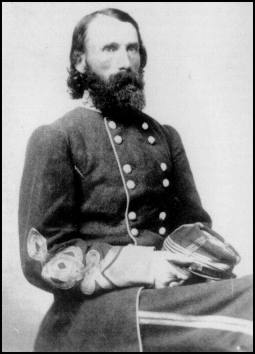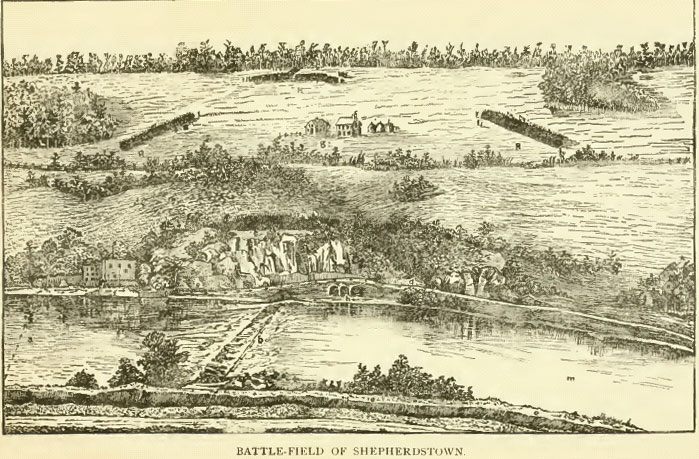Voices of the Maryland Campaign: September 20, 1862

The day began with Confederate soldiers, led by A.P. Hill’s Division, advancing back to Boteler’s Ford downstream from Shepherdstown, ordered there because of the alarm Pendleton created the previous night that crossing Federals captured all of his 44 guns (in reality, the Federals captured four). Hill’s Confederates ran into two Union brigades conducting a reconnaissance on the Virginia shore. Unsure of the threat in front of them, the Federals began to recross under cover of 55 friendly artillery pieces.
Many of the Unionists scrambled back across to Maryland under relative safety. Through a misunderstanding of orders, though, the green 118th Pennsylvania remained atop the Virginia bluffs, their backs to the cliffs and river, facing A.P. Hill’s entire division. Hill’s troops did not ensnare the whole lot of Keystone Staters, but 269 of the 737 men of the 118th Pennsylvania became casualties, and the regiments baptism by fire was truly harrowing.
Despite the Confederate victory at Shepherdstown, Federal troops sealed Lee’s intended reentry point into Maryland at Williamsport. Lee also began to realize that he exhausted his army beyond the point of it being effective anymore, and called his campaign to an end. The opposing armies of this 18-day long campaign settled down into camps on opposite sides of the Potomac, resting and refitting for the next struggle. The Maryland Campaign was over.

One of A.P. Hill’s South Carolina soldiers described the intensity of the Federal artillery fire as they charged forward at the Battle of Shepherdstown.
Our advance was first through a thick cornfield of about two hundred yards breadth, and then across a smooth, open field, a little undulating. We were all the time under the guns of the enemy, although they did not open heavily upon us until we cleared the cornfield… The roar of the pieces, and the howl and explosion of shells, was awful. Sometimes a shell burst right in the ranks, tearing and mangling all around it. In Pender’s brigade I saw a man lifted clear into the air. But all in vain. The men closed up at once, and the advance was continued without a falter.
The characterisation of the Maryland Campaign being over on the 20th is common, but active operations continued for several days. McClellan moved the 2nd and 12th Corps down to Harper’s Ferry with orders to bridge the Potomac preliminary to a move on Winchester. The pontoon bridge was completed, but the night of the 23rd a storm destroyed it. McClellan request for additional bridging equipment from Halleck was denied.
If memory serves I’d put the true end of the campaign, in the minds of McClellan and Lee as least, on the 26th. On that day ISTR Lee writes Davis that he can’t continue the offensive and is now watching McClellan expecting him to move on Winchester, and Halleck absolutely overrules McClellan’s plan to move on Winchester.